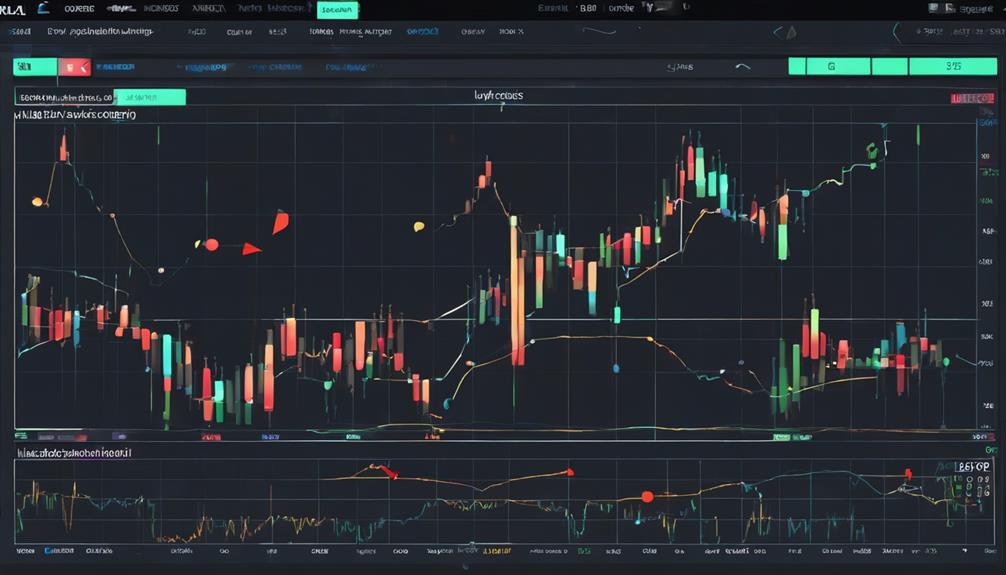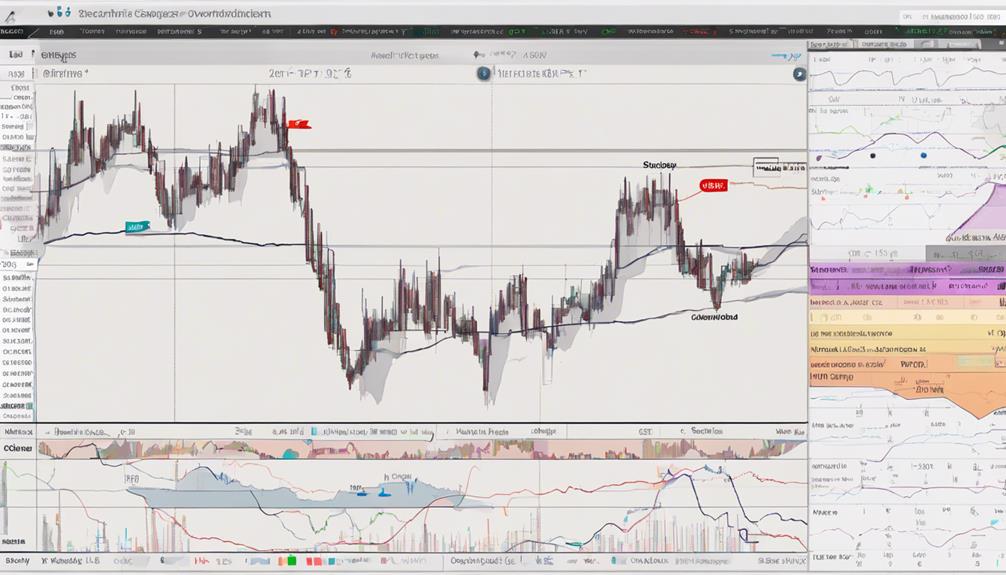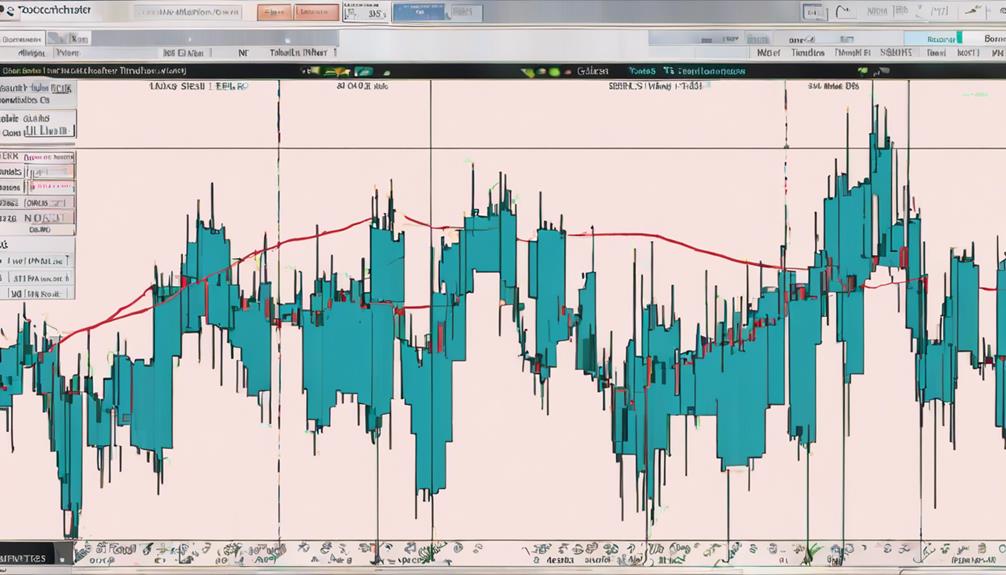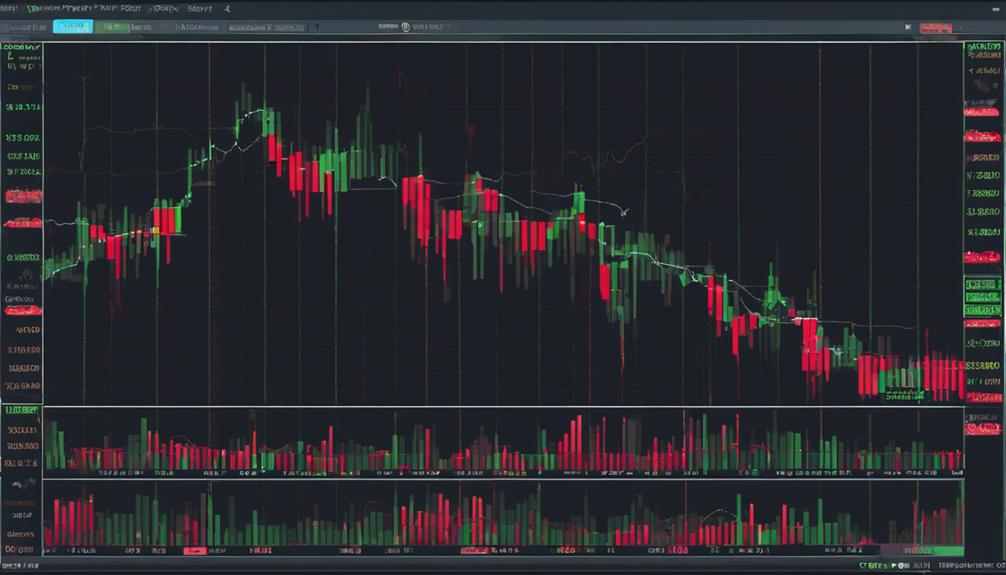You may have heard that delving into technical indicators like the Stochastic Oscillator can be complex and overwhelming, but fear not – this guide is designed to simplify the process for you.
As you navigate through the intricacies of this essential trading tool, you'll uncover practical insights that can elevate your trading game to new heights.
By demystifying key concepts and providing actionable strategies, this tutorial paves the way for a deeper understanding of how to harness the power of the Stochastic Oscillator effectively.
Understanding the Stochastic Oscillator Formula
To understand the Stochastic Oscillator Formula thoroughly, delve into its mathematical intricacies that underpin its significance in technical analysis.
The Stochastic Oscillator formula compares the current closing price to the high-low range over a specific period, providing insights into price momentum. %K, a key component, is calculated as %K = 100 * (Closing Price – Lowest Low) / (Highest High – Lowest Low).
%D, derived from a simple moving average of %K, acts as a smoothed indicator value. This formula aids in identifying overbought and oversold conditions based on recent price action, crucial for accurate interpretation of Stochastic Oscillator signals in trading analysis.
Mastering this formula is essential for utilizing the oscillator effectively in your trading strategies.
Interpreting Stochastic Oscillator Readings

Transitioning from understanding the Stochastic Oscillator Formula, interpreting Stochastic Oscillator readings involves analyzing key indicators to gauge price momentum shifts accurately in technical analysis.
Stochastic Oscillator readings above 80 indicate overbought conditions, suggesting a potential sell signal, while readings below 20 signal oversold conditions, indicating a potential buying opportunity.
The oscillator's range-bound nature helps traders identify extreme price levels for decision-making. This interpretation of Stochastic Oscillator readings allows traders to pinpoint momentum shifts in price action, enabling them to make informed decisions.
Combining Stochastic Oscillator readings with other technical analysis tools can further enhance one's trading strategies by providing a comprehensive view of the market dynamics.
Real-Life Applications of Stochastic Oscillator

Utilizing the Stochastic Oscillator in real-life scenarios offers traders a practical tool for identifying potential trend reversals and confirming market analysis through strategic conjunction with other technical indicators. This momentum indicator can be highly beneficial in trading by providing insights into overbought and oversold conditions, price strength, and market momentum.
Traders often analyze divergences between price movements and the Stochastic Oscillator to anticipate potential trend reversals accurately. By effectively tracking the Stochastic Oscillator's fluctuations, traders can make more informed decisions about entry and exit points in the market.
The Stochastic Oscillator acts as a reliable tool to confirm trading signals and enhance overall market analysis, making it a valuable asset for traders seeking to improve their strategies.
- Identify overbought and oversold conditions
- Analyze divergences for accurate predictions
- Track price strength and market momentum
- Determine entry and exit points effectively
- Confirm trading signals with precision
Utilizing Stochastic Oscillator in Trading

The Stochastic Oscillator serves as a crucial technical analysis tool for traders seeking to gauge market conditions and potential trading opportunities. By identifying overbought and oversold conditions, traders can use the %K and %D lines to gain insights into momentum and trend strength.
Utilizing different versions like fast, slow, and full enables traders to adapt to varying market conditions efficiently. Traders rely on the Stochastic Oscillator to confirm trends and anticipate potential reversals in the market.
Understanding the signals generated by this indicator empowers traders to make informed decisions, enhancing their ability to navigate the complexities of different market scenarios successfully. Make the most of the Stochastic Oscillator to stay ahead of market movements and optimize your trading strategies.
Enhancing Trading Strategies With Stochastic Oscillator

Enhance your trading strategies effectively by integrating Stochastic Oscillator signals with other technical indicators like moving averages or trendlines. When combining the slow stochastic oscillator with moving averages, you can confirm trend strength and identify potential reversals more accurately. This integration helps in pinpointing overbought and oversold levels for optimal entry and exit points.
By observing market momentum through the Stochastic Oscillator, you can adapt your strategies to current conditions swiftly. Utilizing the Stochastic Oscillator alongside other indicators leads to more precise and efficient trade executions, enhancing your decision-making process significantly.
- Utilize Stochastic Oscillator signals with moving averages
- Confirm trend strength and identify reversals
- Pinpoint overbought and oversold levels for entry and exit points
- Adapt strategies based on market momentum
- Increase precision in decision-making through indicator combination
Can I Use the Stochastic Oscillator Indicator as a Beginner?
As a beginner, you may wonder about calculating stochastic oscillator indicator. It’s a useful tool for determining overbought or oversold conditions in the market. However, it’s important to understand how to interpret the signals and use it in conjunction with other indicators for more accurate analysis.
Frequently Asked Questions
What Is Stochastic 14 3 3?
Stochastic 14 3 3 is a default setting for the Stochastic Oscillator, featuring parameters of 14 periods for %K, 3 periods for %D, and a smoothing coefficient of 3. It aids in analyzing short to medium-term price momentum and trend reversals.
What Is 5 3 3 Stochastic Settings?
In 5 3 3 Stochastic settings, %K = 5 calculates the faster line, %D = 3 smooths out %K for clarity, and Smoothing = 3 balances responsiveness with noise reduction. These settings enhance sensitivity to market price changes for quick analysis.
What Is the Best Way to Use a Stochastic Oscillator?
To use the Stochastic Oscillator effectively, watch for %K and %D line crossovers as trading signals, pinpoint overbought and oversold levels for entries/exits, combine it with other indicators/patterns for confirmation, adjust settings based on volatility, and apply it across various timeframes for precise trading opportunities.
What Is the Best Time Frame for Stochastic Oscillator?
You might think a shorter time frame like 5 or 7 periods would be livelier, but 14 periods strike a balance between sensitivity and reliability. Experiment with different intervals to match your strategy and goals.
Conclusion
As you wrap up your journey through the Comprehensive Stochastic Oscillator Guide, you have unlocked the power to decipher market momentum and seize potential trading opportunities. By mastering the mechanics, interpreting signals, and implementing this versatile indicator in Python, you're now equipped to enhance your trading strategies with confidence.
Embrace the Stochastic Oscillator as your ally in navigating the intricate world of financial markets, and watch your trading endeavors flourish. Congratulations on your newfound expertise!
